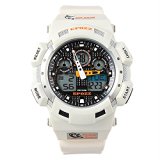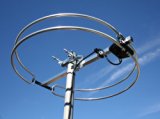Analog Versus digital TV

The big switch to digital-only broadcasts is just just about to happen, but do you really know the difference between electronic and analog? Michael Miller shares the fundamentals regarding the differences when considering analog and digital television.
The smallest amount of You Should Know...
- Current television broadcasts utilize analog technology, which can be susceptible to fading, snow, and spirits.
- Digital television reproduces crystal-clear image and sound without diminishing or disturbance.
- Digital technology also makes it possible for television stations to broadcast multiple stations with various programming.
- Unfortuitously, older analog TVs can’t enjoy electronic transmissions.
What’s so special about electronic TV? How come the complete television broadcasting industry going to digital?
The DTV transition is going on because electronic is way better television—better looking, much better sounding, in accordance with even more stations of programming. In the event that you’ve maybe not however experienced DTV, you’re set for a big surprise!
One which just appreciate DTV, you must understand how current analog television works. As you’ll view, it’s an imperfect system—albeit one that’s worked well enough for close to half a hundred years.
Analog tv transmits programming in a continuous signal. This signal varies in amplitude, with regards to the information included in the photo. It’s types of just how songs had been transcribed onto plastic files; the television signal increases and down depending on what’s becoming broadcast.
This analog sign is transmitted on a particular radio frequency, from the television station’s sending antenna throughout the environment towards getting antenna attached to your TV set. Each television station is assigned a specific regularity that corresponds to its channel number. Whenever you tune your television to a given station, you are really deciding to get transmissions on that certain regularity.
Regrettably, this analog sign is not even close to perfect. It could not necessarily precisely reproduce the original development. It can effortlessly deteriorate over long distances. And it may also endure disturbance from other resources, making ghost images, fixed, and “snow.”
The end result is the fact that analog transmissions usually create a lower-quality photo as compared to initial. The picture isn’t quite like sharp, the background is sometimes grainy, additionally the sound suffers from noise and a lower life expectancy frequency response.
Then again you realize all this—especially in the event that you’ve ever tried to pull in a distant place from a TV mounted on an antenna. The farther you will be from the station, the even worse the picture. And also the results are similarly bad if you're in a large city with a lot of buildings that bounce the signal around. Ghosts and snowfall are prevalent.
In addition, analog television is inefficient. Each VHF or UHF channel uses up plenty of valuable bandwidth. The greater amount of efficient electronic technology can fit four or even more stations into just one analog channel. And that has many prospective advantages.

|
EPOZZ Men Sports Waterproof 50 Male Week Alarm Digital Watch black Watch (epozz)
|

|
Memorable Remastered Film Transfer to DVD (1 Reel) - 8mm, Super 8, 16mm CE (Memorable Inc.)
|

|
White Dual Display Digital Casual Sports Men Waterproof Watch Watch (epozz)
|
|
|
KT&C KNC-p3BR28V12IR HDTV MEGAPIXEL IP NETWORK 3MP OUTDOOR BULLET CAMERA with 2.8-12MM LENS DUAL EXIR SUPER BEAM IR LEDS Photography (KT&C)
|

|
FM Loop Antenna - High Quality Outdoor and RV FM Antenna Speakers (Britta Products LLC)
|